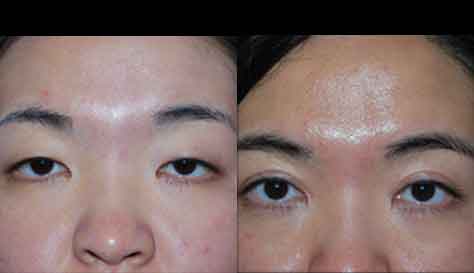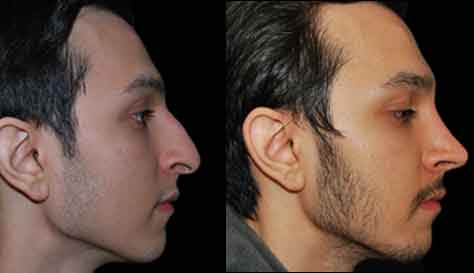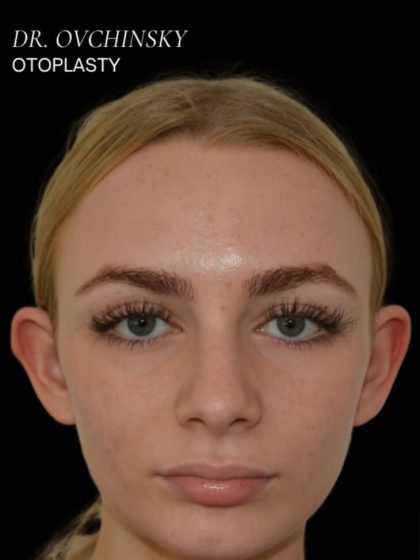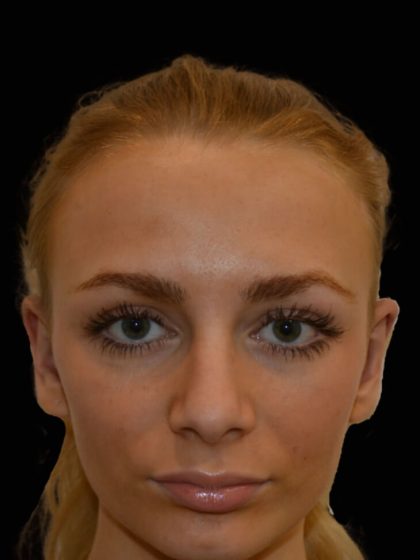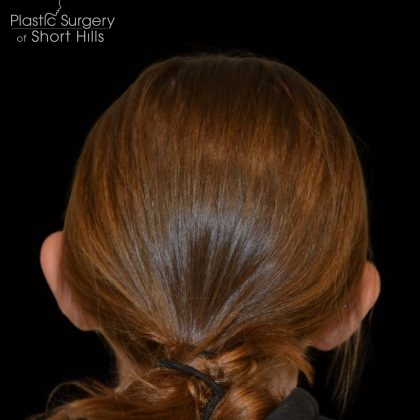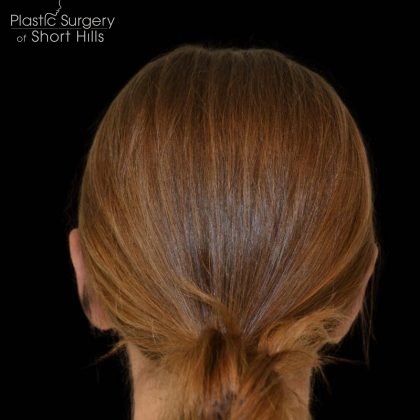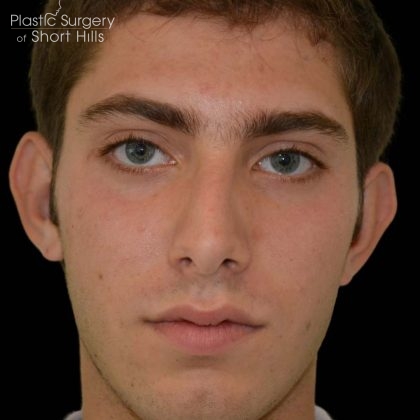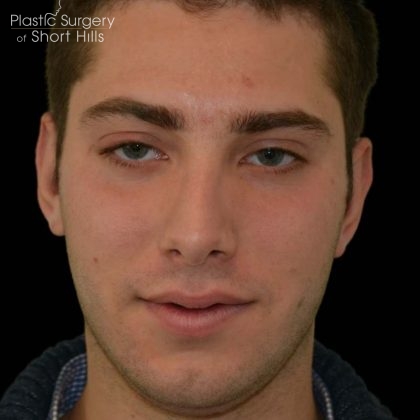Ear Surgery
Conveniently located to serve the areas of New Jersey and New York
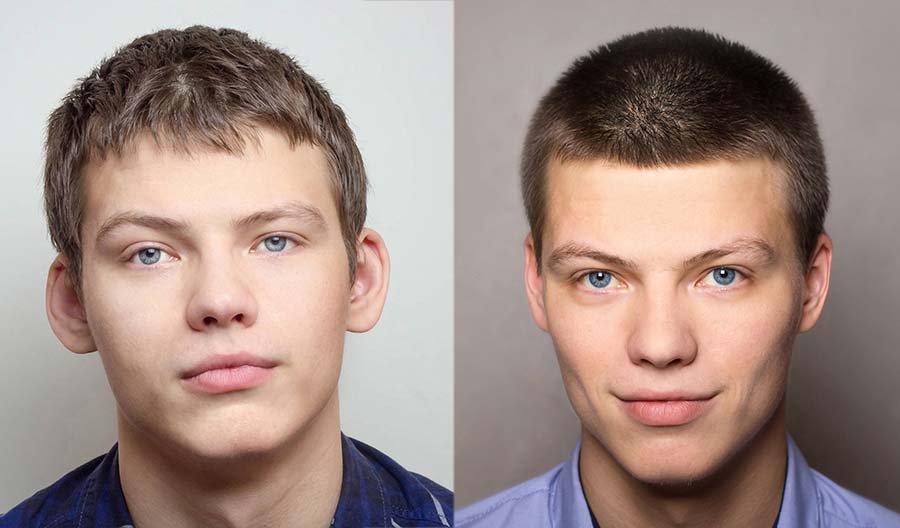
Otoplasty is a surgical procedure that alters the position, size, or shape of the ears. A surgeon places permanent sutures at strategic places in the ear cartilage or removes excessive portions of the cartilage and skin to achieve a more aesthetic appearance. Prominent ears, or ears that stick out from the head more than average, are a common reason for the procedure. Some ear differences are present at birth (congenital), while others can occur due to trauma or infection. If you’re troubled or embarrassed by large, uneven, misshapen, or prominent ears, you can benefit from a procedure called otoplasty.
Dr. Alexander Ovchinsky is a board-certified plastic surgeon and facial plastic surgery expert. Offering advanced cosmetic and reconstructive procedures at Plastic Surgery of Short Hills, Dr. Ovchinsky can help you achieve your aesthetic goals with a tailored otoplasty procedure. Call (973) 379-0101 for our Short Hills, NJ office, or (718) 646-1234 for our Brooklyn, NY location. Alternatively, you can fill out a short inquiry form to book your personal consultation.
Contents
Before and After Photos
About the Ear
The outer ear, known as the auricle or pinna, channels sound into the ear canal. The middle and inner mechanisms of the ears then amplify sound waves and convert this information so our brains can interpret what we are hearing.
The auricle is composed of flexible cartilage and skin, and is the only externally-visible part of the ear. It is normally C-shaped in appearance and has a concave-shaped, sound-collecting cavity known as the concha. Surrounding the concha, the landmarks of the auricle include the following.
- helix
- antihelix
- crura (singular: crux)
- tragus
- antitragus
- lobule
Like our fingerprints, every pair of ears is unique! But certain differences in the anatomy of the ears can be a source of embarrassment and can be corrected by an otoplasty procedure. The ears pretty much stop growing at 5 years of age, so patients can undergo otoplasty any time after 5 years old, though most otoplasty procedures are more frequently sought in childhood. For younger patients, otoplasty to correct protruding ears (known as prominauris) is common. Results are easily achievable when the procedure is performed by an experienced plastic surgeon. Furthermore, surgery can reconstruct or augment ears that have physiological differences, such as an absence of certain cartilage landmarks, or extra cartilage features that make the ear look different.
The Purpose of Otoplasty
Otoplasty changes the appearance of the ears. Generally speaking, people do not consider what their ears look like if they have never had a problem with their size, shape, or how much they stick out. But for a person with ears they consider to be too big, too small, or too prominent, they can be a source of anguish and shame.
Otoplasty is most frequently sought in cases of prominent ears, which are a feature of around 5% of the population. (1) This is when the ears protrude at a more noticeable angle from the head. It is thought that prominent ears have genetic and hereditary factors, although the condition is sometimes caused by fetal position. (2)
Prominent Ears
Although a person can choose to get the surgery later in life, otoplasty for prominent ears is usually performed in childhood. There is now evidence to suggest that the added pressures of modern-day social media exposure may contribute to the negative psychological effects of prominent ears in children. (1)
In many cases, parents seek to mitigate their child’s chances of being bullied before they start school. By ages 5-6, the ears have reached 90% of their adult size, and the cartilages have strengthened, so this is considered an optimal time to perform the surgery. (3)
Other Reasons for Otoplasty
As well as prominent ears, the reasons for an otoplasty can include the following.
- Constricted Ears: A difference in the circumference of the helical rim, this condition is also known as “lop” or “cup” ears due to the upper ear’s curled appearance.
- Stahl’s Ear: There are missing cartilage folds in Stahl’s ear, giving the auricle a pointed appearance. Variations of Stahl’s ear can look quite different from one another.
- Cryptotia: Cryptotia is a poorly-defined upper ear. The condition gives the impression that the top of the auricle is buried under the skin of the temple. (4)
- Traumatic Deformities: Traumatic deformities can present in many different ways and may be caused by different kinds of trauma. These include laceration, tears, and blunt force trauma (e.g. cauliflower ear).
- Lobe Deformities: Earlobes can be asymmetrical. Some lobes can have clefts or unwanted protrusions of skin (e.g. skin tags).
When the ears’ appearance or position strays from the norm, it can be a lifelong source of embarrassment. Ears that patients may consider out of proportion with the rest of their features, ears that have not recovered from a prior injury, ears that are asymmetrical, and ears that protrude can all benefit from an otoplasty procedure. The newly-constructed auricle allows the patient to alleviate their stress and self-consciousness, which in turn can inspire self-confidence and contentment in the patient. With Dr. Ovchinsky’s help, you can get the results you need to live a happier life.
Research shows that otoplasty has high patient satisfaction rates. In one study, 93% of survey respondents who received otoplasty surgery would get the surgery again. (5)
Personal Consultation
Every patient receives personal consultation with Dr. Ovchinsky prior to their surgery. As an experienced facial plastic surgeon, he has performed many otoplasty procedures on patients of all ages. To create your treatment plan, Dr. Ovchinsky will perform a physical examination of your ears at your initial consultation. He will speak with you about your reason for seeking an otoplasty procedure, and what you would like to achieve with the surgery. After the examination, Dr. Ovchinsky will put forth a treatment plan that incorporates your thoughts and that uses the best technique to create the ideal look for your ears.
At Plastic Surgery of Short Hills, we get surgery requests from all over the country, and even some from overseas! Dr. Ovchinsky welcomes those from outside New Jersey and New York to get in touch. If you’re coming from out of state, or considering visiting us from outside the United States, check our Out of State/International page!
Procedure
Depending on your treatment plan, an otoplasty procedure usually takes around two hours to complete. The surgery can be performed using general or local anesthesia, but in adults, it is usually done in the office under local anesthesia. In most cases, general anesthesia is recommended for children.
Although otoplasty surgery varies in technique depending on the reason for treatment, prominent ear surgery usually follows these procedural steps.
- Dr. Ovchinsky makes an incision behind the ear in the skin crease.
- He trims any excess skin, then exposes the cartilage.
- By modifying and reshaping the ear with special sutures, Dr. Ovchinsky creates folds to give the ear a natural appearance.
- By manipulating these sutures, the ear can be pinned closer to the skull.
- Position of the war lobule is adjusted either by removing the excess of the lobule or using special sutures to set the lobule in more natural position.
- Finally, Dr. Ovchinksy closes the incision and places a supporting bandage over the ears.
Recovery
After an otoplasty procedure, the ears may feel tender for several weeks. Patients can expect to experience some temporary swelling and skin discoloration from bruising. Immediately after the surgery, you’ll wear a turban-like dressing to protect your ears, which is usually removed on the first postoperative day. When the turban-like bandage is removed, Dr. Ovchinsky will ask you to wear a headband to secure the ears when you sleep. You can expect to wear this for around 2 weeks. We recommend that child patients take a week off school to recover from otoplasty surgery. In most cases, adults can resume their normal activities with caution the following day.
Cost of Otoplasty in Short Hills NJ
The cost of your otoplasty procedure will be determined after your consultation with Dr. Ovchinsky. Financing is also available for many plastic surgery procedures, so please inquire with our office staff. We will ensure you are completely prepared with the necessary preparation and recovery information before your surgery date. To book your personal consultation at Plastic Surgery of Short Hills, please call (973) 379-0101 or complete a short online form to contact us.
FAQ
Does otoplasty fix big ears?
Yes! Whether it’s the size of your ears or how much they protrude, an otoplasty can provide you with a more natural aesthetic.
Will I get scars after an otoplasty?
The incisions for otoplasty are hidden in the crease behind the ears, so scars are very well-concealed.
How painful is recovery after an otoplasty procedure?
Though every patient experiences discomfort differently, otoplasty pain is usually well-tolerated, and can be well-managed with over-the-counter pain medication.
Are there any risks or complications with otoplasty?
As with all types of surgery, there are potential complications associated with otoplasty and these may include blood collection (hematoma), poor scarring, infection, mismatched or artificial-looking ears, altered sensation over the ears, and recurrence of the ear protrusion.
When can I exercise after otoplasty?
It is ok to start aerobic exercise 2 weeks after the surgery. However, strenuous activities, contact sports, and any activity risking injury to the ear should be avoided for at least one to two months.
When do the stitches get removed after an otoplasty?
Skin sutures for otoplasty are dissolvable and do not require removal. Patients can expect this to happen roughly two weeks after their procedure.
References
- Assis, M. S., & Miranda, L. S. (2022). Performance-optimized otoplasty. BMC Surgery, 22(1). https://doi.org/10.1186/s12893-022-01587-y
- Kajosaari, L., Pennanen, J., & Klockars, T. (2017). Otoplasty for prominent ears – demographics and surgical timing in different populations. International Journal of Pediatric Otorhinolaryngology, 100, 52–56. https://doi.org/10.1016/j.ijporl.2017.06.014
- Kennedy, K. L., & Katrib, Z. (2021). Otoplasty. PubMed; StatPearls Publishing. https://www.ncbi.nlm.nih.gov/books/NBK538320/
- Kim, S.-K., Yoon, C.-M., Kim, M.-H., Kim, M.-S., & Lee, K.-C. (2012). Considerations for the Management of Cryptotia Based on the Experience of 34 Patients. Archives of Plastic Surgery, 39(06), 601–605. https://doi.org/10.5999/aps.2012.39.6.60
- Hao, W., Chorney, J. M., Bezuhly, M., Wilson, K., & Hong, P. (2013). Analysis of health-related quality-of-life outcomes and their predictive factors in pediatric patients who undergo otoplasty. Plastic and Reconstructive Surgery, 132(5), 811e817e. https://doi.org/10.1097/PRS.0b013e3182a3c133




